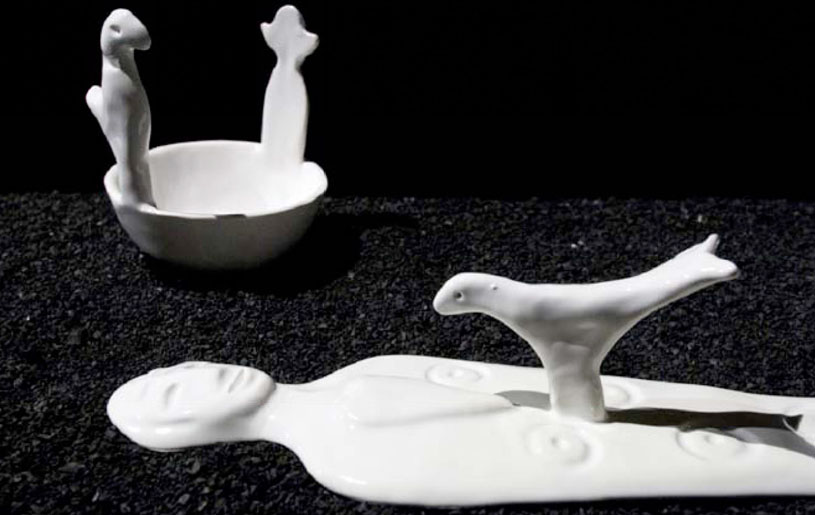Oreste Zevola, Refulgenzia at Tricromia Gallery, Rome

I don’t now if your grandmother ever had a garden, and in that garden she used to keep palms, bamboos and other tropical plants. Imagine yourself sitting in a corner of the porch after a good grandma-style lunch. The November sun behind the vegetation transforms the leaves into mysterious green neon lights and makes the bark of threes shine like silver. You may call it a Sunday afternoon enchantment, you may call it Refulgenzia. In that moment you can even expect a tiger jumping out from behind a terracotta pot – which of course, now looks like a column from some Bengalese temple. It’s the exact same feeling that Paolo Conte – the Italian musician – so well depicted in his song Azzurro: “Cerco un pò d’Africa in giardino, tra l’oleandro e il baobab” (“I’m looking for a bit of Africa in my garden, between the oleander and the baobab”). It’s about looking for the exotic in the familiar and the familiar in the exotic. In contemporary art not many artists are able to convey that. Oreste Zevola does it.

Zevola is an Italian artist – Neapolitan to be more precise – with an international career as artist, illustrator, jeweler and all-round creative. He currently lives and works between Naples and Paris. His drawings have been published by the New Yorker, Washington Post, Times, Forbes and Bloomberg Editions among others. Zevola shares an artistic sensitivity with other notable contemporary artists from the Campania region, Mimmo Paladino above all. Their power is the one of the visual synthesis. That capacity of mixing diverse influences from different parts of the world and different stage of their life into one cohesive language. It is no different to what our ancestor did when making work that we now call “primitive”. It’s an ancestral and universal language; it goes straight to the core of the human being.

What I noticed – now that I’m used to look at Asia-Pacific artists most of my day – is that Zevola’s visual universe has some similarity with the one of artists living on the opposite side of the globe, such as Indonesians Dadang Christanto and Eko Nugroho. These South-East Asian artists have probably never seen Zevola’s work and it’s highly unlikely that Zevola has ever seen theirs. It’s fascinating to see how artists sometimes get to speak a similar languages, even if they come from different walks of life or are heading in different directions. I think that is what happens when you bare the bones, you go straight to the truth with grace and playfulness.
For me Zevola’s work celebrates the joy of the people, the splendour and the pain of being alive and its ultimate mystery. Above all, his art is about the necessity of keep on telling stories, because it’s all we have in the end. Being in love and exploring new territories, mentally, physically and artistically, are feelings that are closely related. And “Refulgenzia” it’s the golden beam from behind a terracotta pot, making it suddenly clear. Making it superb. Making it glorious.
ORESTE ZEVOLA. REFULGENZIA
curated by Maria Savarese
From 12 October to 9 November 2014
Tricromia Artgallery
, Rome








